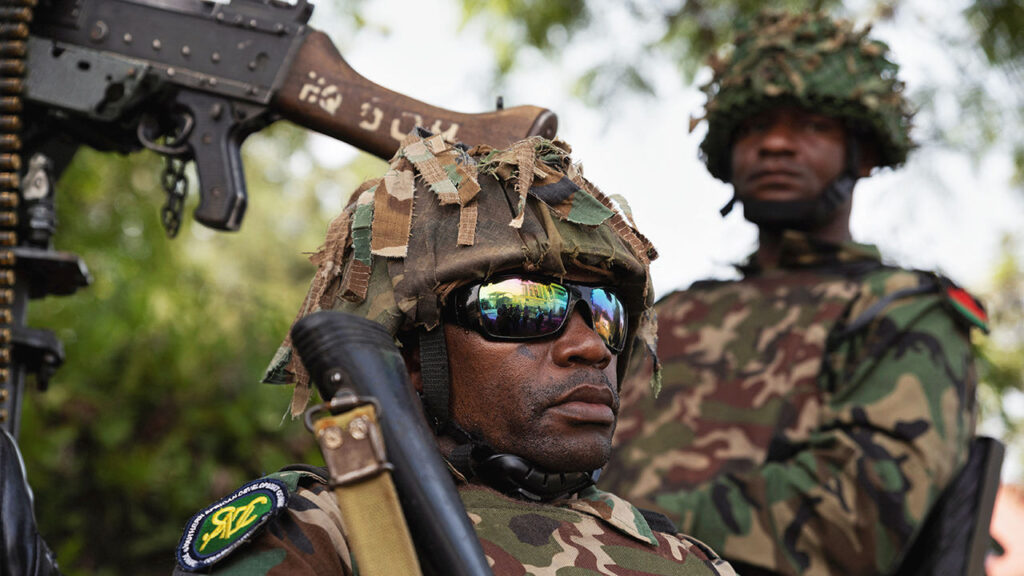Escalating Tensions in Eastern Democratic Republic of Congo
The eastern region of the Democratic Republic of Congo (DRC), rich in minerals, has been plagued by conflict for over three decades, a turmoil that can be traced back to the fallout of the 1994 Rwandan genocide. Since then, various armed factions have vied for control, leading to devastating consequences not just within the DRC, but also extending to neighboring nations. The region saw immense bloodshed during the 1990s, marked by two cataclysmic wars often referred to as Africa’s World Wars, claiming millions of lives.
Recent Developments and the Role of M23
Since the start of 2025, prompted by significant territorial gains made by the rebel group known as M23, attention has once again turned to this conflict-ridden area. Following its capture of key locales such as Goma, a bustling city in North Kivu housing over a million residents, discussions around peace have emerged. Goma serves as an essential hub for trade and transportation, strategically located near lucrative mining regions.
In late February, M23 further extended its reach by seizing Bukavu, the capital of South Kivu province. Fighting continues as M23 engages with the Congolese military and various allied militias in attempts to expand their influence, with threats even directed towards the nation’s capital, Kinshasa, located approximately 2,600 kilometers away.
Who is Behind M23?
The M23 rebel group, led predominantly by ethnic Tutsis, states that its armed campaign is a response to the violation of minority rights in the region. The name “M23” is derived from a peace agreement struck with a prior Tutsi-led rebel faction on March 23, 2009. Following its emergence in 2012, M23 quickly gained control over vast territories, including Goma, which drew international condemnation for alleged war crimes and human rights abuses. Although it was initially expelled in 2013 due to concerted military pressure from the Congolese army and a United Nations force, the group recently resumed hostilities after asserting that previous promises of protection for Tutsis had been ignored.
The Rwandan Connection
Sultani Makenga, the leader of M23, is a Congolese Tutsi with ties to the Rwandan military, and this aspect has heightened scrutiny around Rwanda’s involvement in the conflict. Although Rwanda has denied backing M23, persistent allegations from UN experts dating since 2012 suggest otherwise, including accusations of providing military assistance and resources. A recent report indicated that as many as 4,000 Rwandan troops are actively fighting alongside M23 forces, contributing to rising tensions between Rwanda, the DRC, and international entities like the United States and France.
Historical Context
The roots of the ongoing conflict can be traced back to Rwanda’s tumultuous history, particularly the 1994 genocide which decimated the Tutsi population. Following this brutal event, approximately one million Hutus fled into what is now DRC, further complicating ethnic dynamics. The Rwandan army has made multiple incursions into DRC, citing efforts to track down genocide perpetrators, while the presence of Hutu groups like the Democratic Forces for the Liberation of Rwanda (FDLR) still poses a risk to regional stability.
Peace Efforts and International Relations
Recent months have witnessed attempts to broker peace in the DRC amidst stalled negotiations. Key developments include:
- March 18: Direct talks between Congolese President Félix Tshisekedi and Rwandan President Paul Kagame, calling for an immediate ceasefire.
- April 23: A tentative agreement between the DRC and M23 to cease hostilities until Qatar-mediated discussions yield results.
- April 25: An agreement signed in Washington to respect sovereignty and draft a peace document.
Despite these gestures of goodwill, conflicts persist, particularly with M23 capturing additional areas in South Kivu. With the U.S. pushing for a mineral trade agreement that would stabilize relations between the DRC and Rwanda, the international community remains keenly aware of the conflict’s potential for further escalation.
Impact on Mineral Wealth
The DRC’s vast mineral resources have drawn external interests, with accusations that Rwanda exploits the situation to extract valuable resources like coltan and gold. Recent UN reports highlighted that around 120 tonnes of coltan are being smuggled to Rwanda every four weeks by M23. While Rwanda refutes these claims, the implications for both humanitarian conditions and global commerce are significant.
Ongoing Challenges
A permanent UN peacekeeping force, MONUSCO, has operated in the region since 1999. However, recent criticisms have emerged, arguing the mission has failed to protect civilians. A Southern African Development Community (SADC) contingent, deployed in late 2023, has also yielded little success and has begun withdrawing its forces.
| Date | Event |
|---|---|
| March 18 | Tshisekedi and Kagame call for an immediate ceasefire. |
| April 23 | DR Congo and M23 agree to halt fighting until peace talks conclude. |
| April 25 | Agreement signed between DR Congo and Rwanda to respect sovereignty. |
The military and humanitarian challenges in the eastern DRC remain complex and multifaceted, with no clear solutions in sight as both local and international stakeholders navigate a volatile landscape.


